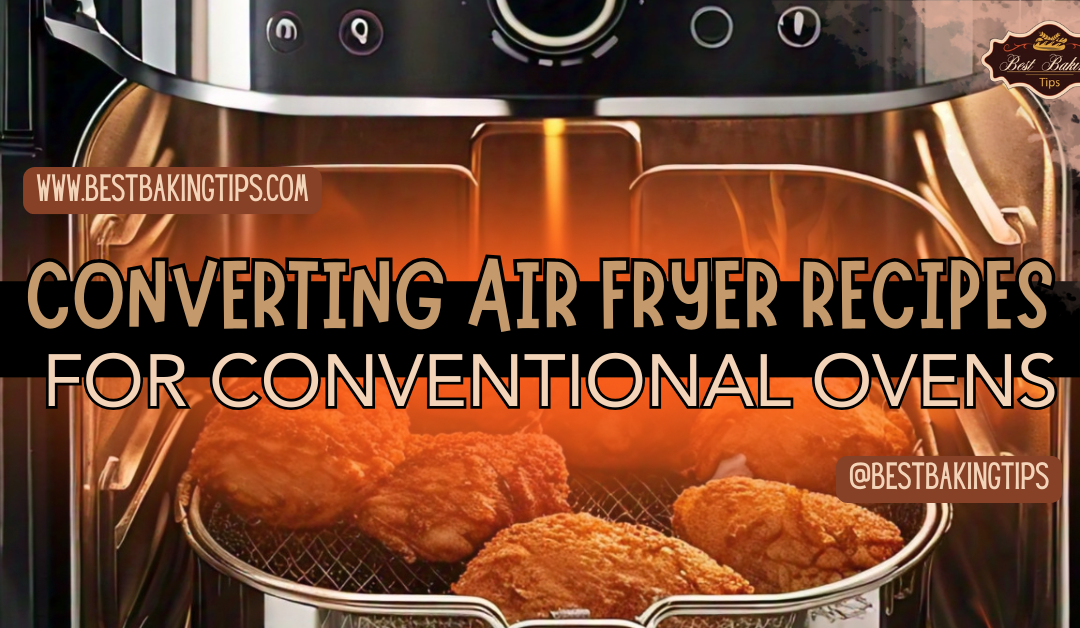==================
Affiliate Statement
Best Baking Tips is supported by our audience. When you purchase through one of our links, we may earn a small affiliate commission. As an Amazon Associate I earn from qualifying purchases. Your cost is not affected.
==================
Converting air fryer recipes for conventional ovens is a common challenge for many home cooks, especially those embracing a plant-based lifestyle. With years of experience in air frying and conventional oven cooking, I’ve mastered the art of adapting recipes to suit any kitchen, including vegan-friendly options. Whether you’re craving crispy tofu, hearty vegetable roasts, or decadent plant-based desserts, I’ll guide you through the process of converting your favorite air fryer recipes to the oven, ensuring you maintain the same delicious results. Ready to embark on this culinary journey? Let’s dive into the world of recipe conversion!
Converting Air Fryer Recipes for Conventional Ovens: A Step-by-Step Guide
The excitement of cooking with an air fryer is undeniable. It offers a healthier alternative to traditional frying methods. Air fryers utilize the efficiency of hot air circulation to achieve crispy results with far less oil.
As these innovative appliances become a staple in kitchens, many of us look to adapt our favorite oven-baked or deep-fried recipes for the air fryer. The key to a successful transition lies in understanding how air frying differs from other cooking methods and making the necessary adjustments to temperature and cooking times.

Converting recipes for an air fryer isn’t complex, but it requires a thoughtful approach to achieve similar textures and flavors we love. Lowering the recommended oven temperature by 25 degrees Fahrenheit is often a good starting point, as is reducing the cooking time by approximately 20-30%. Frequent monitoring for doneness is also crucial, as food can cook more quickly in an air fryer’s compact space. With a few tweaks, you’ll be able to enjoy your favorite dishes with the benefits of air frying.
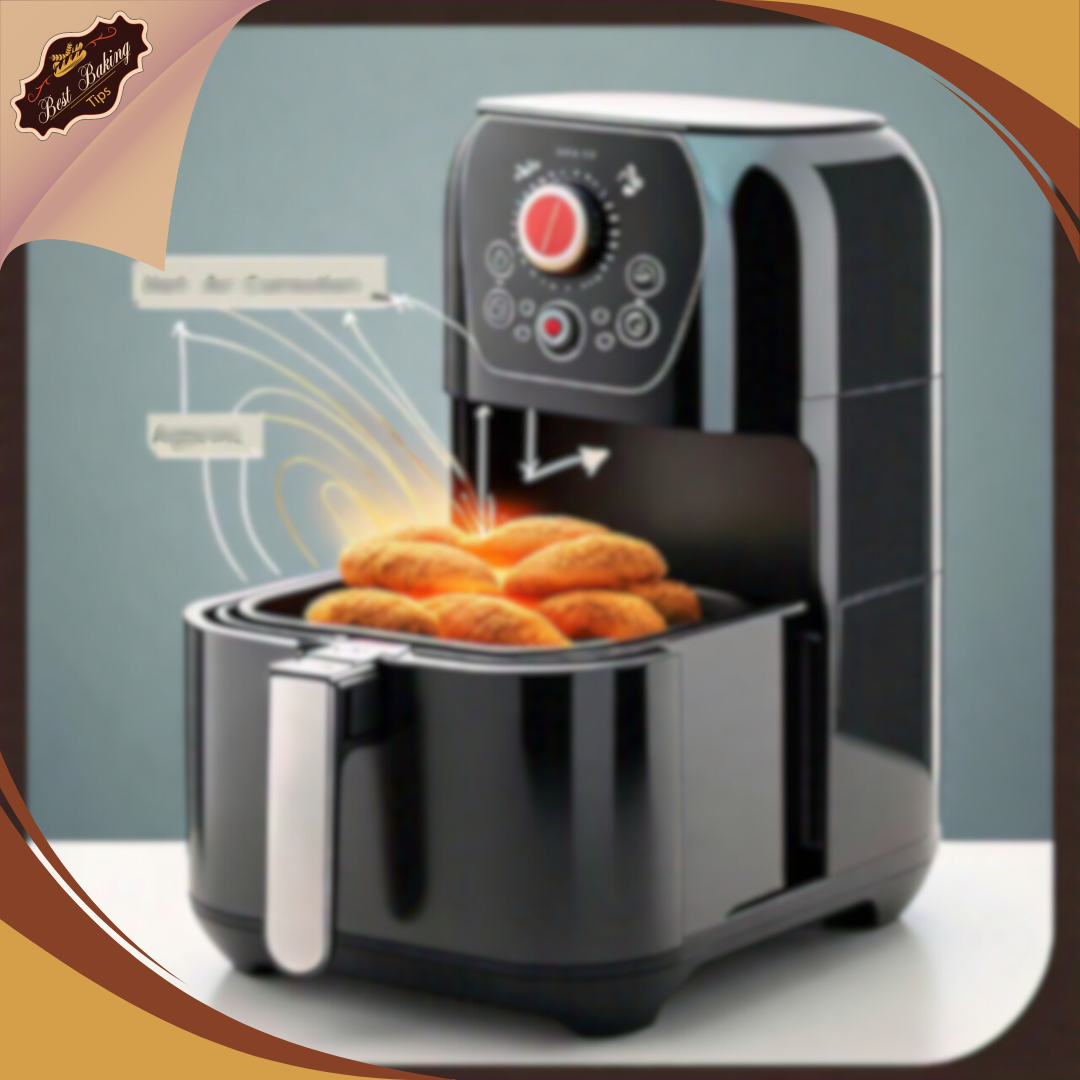
Key Takeaways
- Air frying offers a healthier alternative, using less oil compared to traditional frying.
- Recipes for air frying often require a lower temperature and shorter cooking time.
- Monitoring food frequently during cooking is important for achieving the desired results.
Understanding Air Fryer Cooking

I often find that to successfully adapt recipes for an air fryer, one must first grasp how this appliance cooks food differently compared to traditional methods. My explanations aim to solidify your understanding for a seamless transition in your culinary practices.
Principles of Air Frying
In essence, air frying operates on the concept of rapid air circulation. Hot air is distributed at high speed around the food, cooking it quickly and providing a crispy outer layer. This is achieved through a combination of a heating element and a fan, which works synergistically to create an even and efficient cooking environment inside the air fryer. The result is often similar to deep-frying but with significantly less oil, offering a healthier take on fried foods.
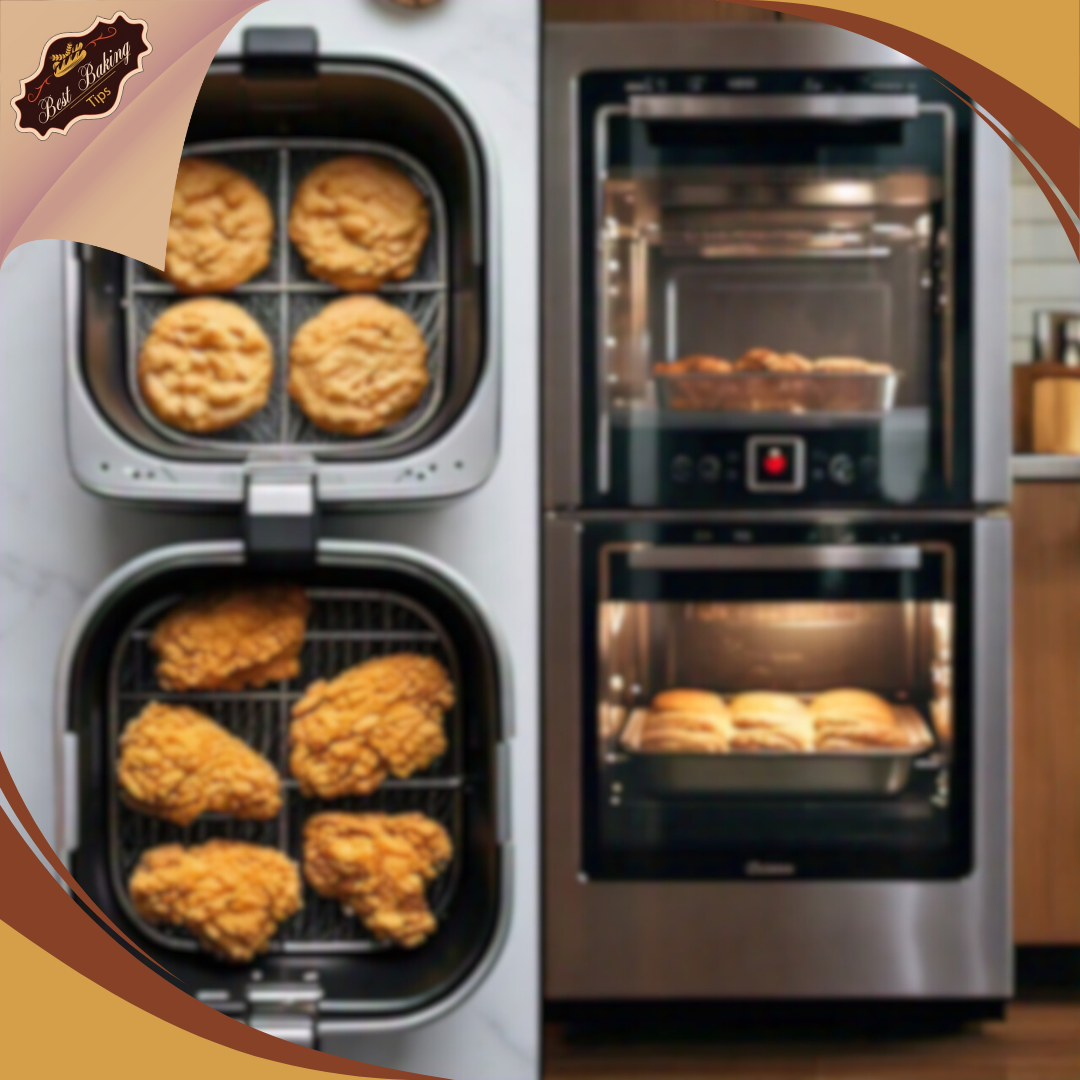
Comparing Conventional and Air Fryer Cooking Methods
Conventional Oven:
- Heat source: Radiant heat from heating elements
- Cooking method: Slow heat transfer through air
- Oil usage: Varies by recipe
- Cook times: Generally longer
- Textural outcome: Often varies; may require flipping or stirring
Air Fryer:
- Heat source: Rapidly circulated hot air
- Cooking method: Fast and even cooking due to air circulation
- Oil usage: Minimal to none
- Cook times: Typically reduced
- Textural outcome: Consistently crispy and even
Comparison showcases that while conventional methods heat food more slowly through stagnant hot air or direct contact with a heat source, air fryers use minimal oil and achieve quicker, more even cooking results due to the rapid air movement. The small cooking chamber of an air fryer, combined with the high-speed fan, allows food to cook thoroughly with a desirable crispness that is often associated with fried foods.
Adjusting Recipes for the Air Fryer
When I adapt recipes for the air fryer, I focus on precise ingredient alterations, recalibrating portions and cooking space, as well as fine-tuning temperature and cooking times.
Ingredient Modifications
For ingredients, I often need to reduce the amount of oil significantly since air fryers use hot air to cook food, giving it a fried texture without submerging it in oil. Foods that are breaded might require a spritz of oil for an even golden color and crispness.
Portion Sizing and Cooking Capacity
It’s essential to consider the size of the air fryer basket when converting recipes. I make sure not to overcrowd it to allow for optimal air circulation. Sometimes, this means cooking in batches depending on the amount of food.
Temperature and Time Adjustments
Regarding temperature, I typically lower the cooking temperature by 25 degrees Fahrenheit compared to conventional oven settings. As for timing, I start by reducing the cook time by 20% and then check the food periodically to prevent it from overcooking.
Recipe Conversion Process

When converting traditional oven recipes to air fryer recipes, it’s essential to adjust cooking temperatures and times. I simplify the process by analyzing the original recipe, executing a test run, and making tweaks based on the results.
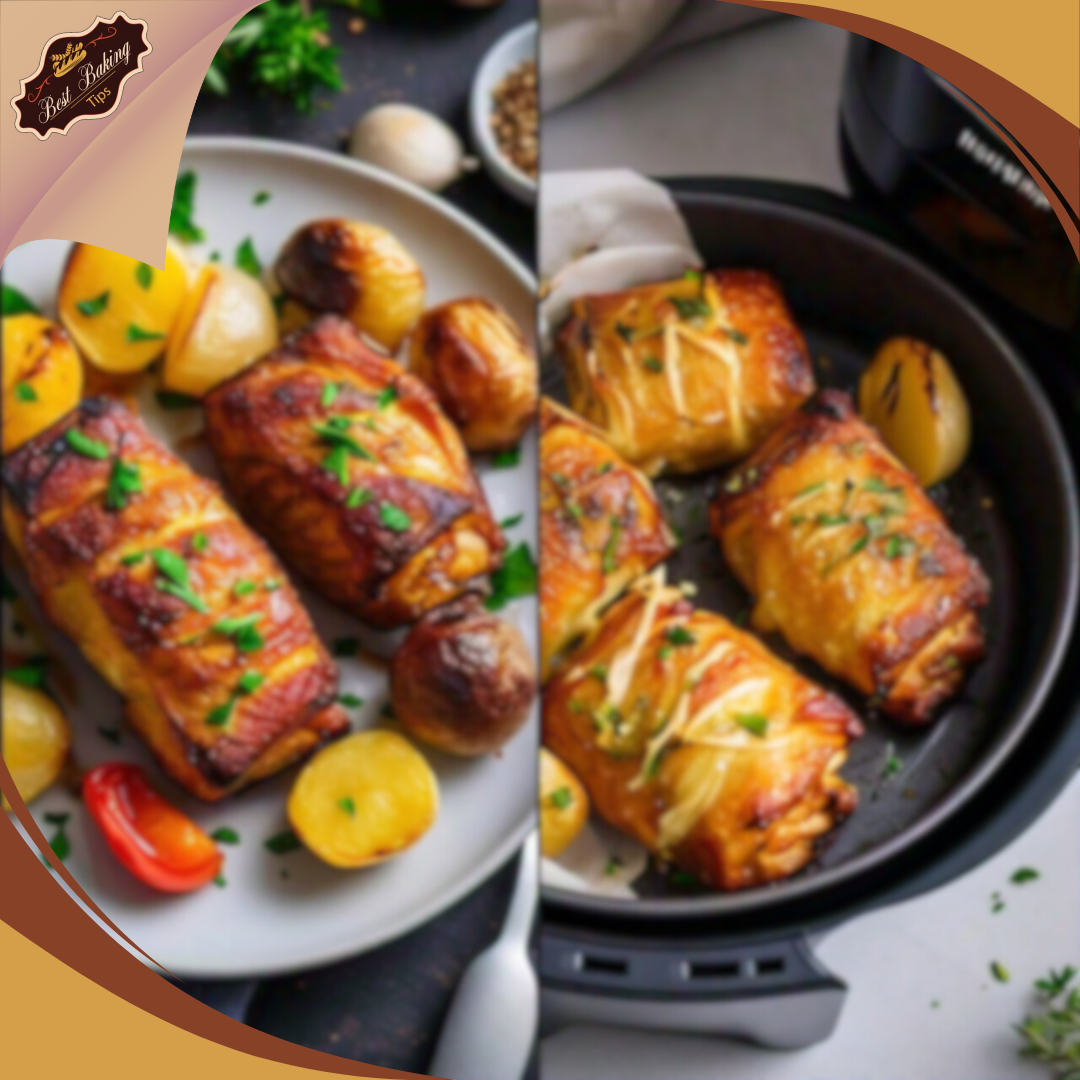
Analyzing the Original Recipe
I begin by examining the cooking temperature and time for the original oven recipe. General guidance suggests reducing the air fryer temperature by 25 degrees F to prevent overcooking. For instance, if a recipe calls for baking at 350 degrees F, I set my air fryer to 325 degrees F. I also consider the nature of the food; for example, breaded items tend to cook faster and can require additional temperature adjustments.
Executing a Test Run
Next, I conduct a test run using the adjusted settings. I stay vigilant throughout the cooking process, checking the food periodically. Timing adjustments are usually needed; the rule of thumb is to reduce the original cook time by about 20%. However, this can vary, so I keep a close eye on the dish, especially during the first test.
Tweaking Based on Results
After the test run, I analyze the outcome and make any necessary changes. Is the dish undercooked, or is the exterior too browned? I adjust the temperature or cook time accordingly. If the test recipe requires further refinement, I’ll make small, incremental changes. For moist dishes, like cakes, I ensure not to reduce the cook time too much; it’s crucial to achieve the right internal texture without drying out the exterior.
Tips for Successful Conversions

In converting recipes for an air fryer, I keep in mind the unique cooking mechanism of rapid air circulation. It’s crucial to adjust not just temperature and time, but also the quantity and application of ingredients to achieve excellent results.
Use of Oil in Air Fryer Recipes
Air fryers require significantly less oil compared to traditional frying methods. I usually spray or brush a light coating of oil on my food for flavor and to promote browning. For foods with natural fats like chicken or salmon, I often skip additional oil altogether, as the circulating air is efficient in cooking the fat to a crisp exterior.
Understanding Airflow and Flip Techniques
The success in air frying hinges on the air’s ability to circulate. I always arrange ingredients in a single layer and avoid overcrowding. I make it a point to shake the basket or flip the items halfway through cooking to ensure even exposure to the hot air, which results in uniform cooking and browning.
Managing Moisture and Breading
When working with breaded items, I ensure the coating is well-adhered to prevent it from blowing off. I tend to lightly press breadcrumbs onto the food and give it a spritz of oil. For moisture management, I occasionally use parchment liners with holes to absorb excess grease and prevent the air fryer from smoking, especially while cooking foods that release a lot of fat.
Cleaning and Maintenance Tips
When I use my air fryer, I ensure it stays in optimal condition by following routine cleaning and maintenance steps. It’s essential to keep this handy appliance in good shape to guarantee consistent cooking results and longevity. Here are some straightforward tips I adhere to:
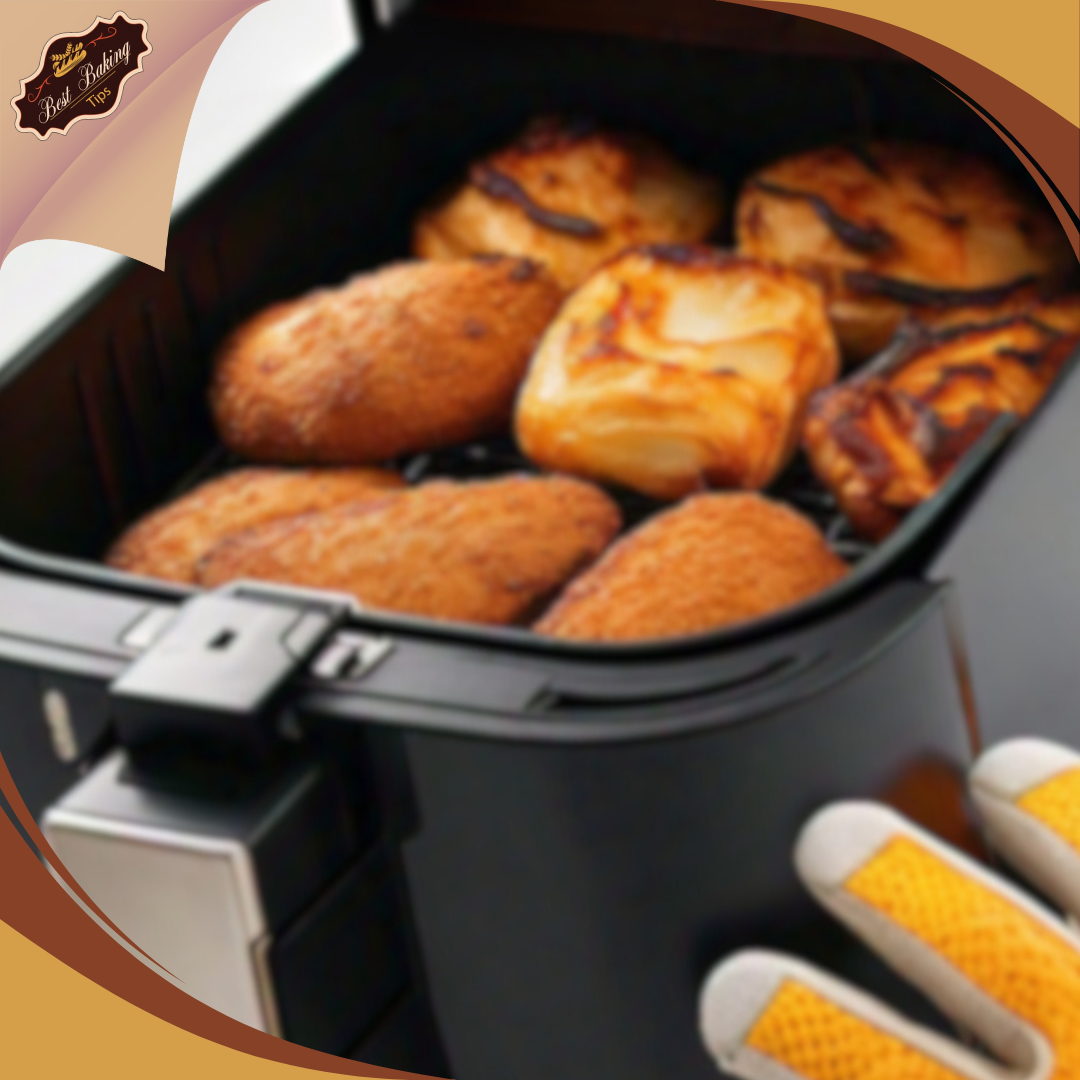
- After Each Use: I always make sure to clean my air fryer after each use. This includes removing any food debris from the cooking basket. It is often as simple as wiping it down with a paper towel or a soft sponge and some dish soap. For any tough residue, soaking in warm soapy water usually does the trick.
- Avoid Harsh Chemicals: To preserve the non-stick surface, I avoid using harsh chemicals or abrasive sponges. If there are stubborn stains, I let the basket soak for a bit longer, or gently use a soft-bristled brush to dislodge any remaining food particles.
| Part of Air Fryer | Cleaning Method |
|---|---|
| Main Unit | Wipe with a damp cloth. |
| Basket and Pan | Wash with soapy water; dishwasher-safe if applicable. |
| Heating Element | Gently brush off debris when cool and unplugged. |
- Regular Check: I also conduct a regular check-up of my air fryer, inspecting for any wear and tear or potential issues with the cord or plug. This helps me catch any problems before they become major.
- Dry Thoroughly: After cleaning, I make sure all components are thoroughly dried before reassembling. This prevents any moisture buildup, which can lead to bacterial growth or damage the electrical components over time.
Safety Considerations

When converting recipes for an air fryer, I prioritize safety to ensure a pleasant cooking experience. Here are some key points to keep in mind:
Read the Manual: Before I begin, I always read the air fryer’s manual. It provides vital information on the safe operation of the device. This includes the maximum fill level to prevent overloading.
Adjust Temperature and Time: Lowering the temperature by 25 degrees compared to the oven is crucial to avoid overcooking or possibly starting a fire. I also reduce the cooking time by about 20% to prevent burning, but I keep an eye out for doneness.
Handling Food: I use tongs or heat-resistant gloves to remove food from the air fryer. I make sure not to touch the heating element, as it can cause serious burns.
Avoid Water Near Electrical Components: I am careful to keep water away from the air fryer’s electrical components to prevent electrical shocks or malfunctions.
Proper Placement: I place my air fryer on a heat-resistant surface. I also ensure there’s ample space around it for the hot air to circulate and vent properly.
To avoid releasing hot steam onto my skin, I open the air fryer drawer cautiously, angling it away from me. Following these guidelines helps ensure that my air fryer conversions are not only successful but also safe.
Additional Resources for Recipe Conversion

When converting recipes for my air fryer, I often turn to a few key online resources that facilitate the process. Here, I’ve organized them into an easy-to-navigate list:
- Temperature and Time Conversion: This Air Fryer Conversion Calculator lets me quickly determine the right temperature and time adjustments needed when switching from the oven to the air fryer.
- General Guidelines: Over at Everyday Family Cooking, I find a handy conversion chart and calculator that helps me adapt the temperature and cooking time from traditional oven recipes.
- Conversion Tips: AllRecipes provides a straightforward approach to conversion: reducing both the cooking temperature and time by 25%.
- Ingredient Choices: The right ingredients matter too. I check out an article about selecting the best components for air frying in this guide on Adapting Traditional Recipes for Air Frying.
- Food Network Insights: For diverse culinary viewpoints, I refer to the Food Network’s guide on converting fried recipes for the air fryer, especially concerning breaded items.
Remember, air fryers often cook food more quickly than conventional ovens, so it’s crucial to monitor the food for doneness. Also, the size and model of the air fryer can require slight tweaks to these guidelines. Italic Text with a neutral, clear, and confident tone leads to a better understanding of the cooking adjustments needed for perfect air-fried meals.
Converting Air Fryer Recipes for Conventional Ovens: Final Say
Thank you for joining me on this culinary journey. We’ve explored the art of converting air fryer recipes to conventional ovens, uncovering the secrets to achieving similar results. From understanding the fundamental differences between the two cooking methods to mastering the techniques of adjusting temperatures, cooking times, and ingredients, we’ve covered a lot of ground.
Remember, as you experiment with these conversions, prioritize safety. Always handle hot surfaces and sharp utensils with care. Don’t be afraid to step out of your comfort zone and try new things. The kitchen is a place for creativity and exploration.
Ready to start converting? Let’s dive into the kitchen and create delicious, healthy meals!
Frequently Asked Questions
Navigating the specifics of air fryer cooking can be simple with the right guidelines. Let’s explore some of the most common inquiries about converting recipes for air fryer use.
How can I adjust oven cooking times for recipes when using an air fryer?
To adapt oven cooking times for an air fryer, a general rule is to reduce the recommended oven time by 20%. This adjustment accounts for the more efficient heat circulation of air fryers. For instance, if a recipe calls for 30 minutes in the oven, it typically requires about 24 minutes in an air fryer.
What is the temperature conversion formula from oven to air fryer cooking?
When converting oven temperatures to air fryer settings, reduce the oven temperature by about 25 to 50 degrees Fahrenheit. If an oven recipe suggests 375°F, set the air fryer to approximately 350°F to achieve a similar outcome.
Is there a difference in cooking times between pan frying and air frying?
Yes, there is a difference in cooking times between pan frying and air frying, with air frying often being faster due to the technology’s quick and efficient heat distribution. Items that usually take 10 minutes to fry in a pan may cook faster in an air fryer, so it’s important to check the food periodically.
Where can I find a printable air fryer temperature conversion chart?
Printable air fryer temperature conversion charts are available online, providing a handy reference. Sites like Everyday Family Cooking offer charts that help with the conversion process.
How do I modify chicken recipes specifically for an air fryer?
Chicken recipes for air fryers often require a slight temperature increase and a reduction in cooking time. If the oven recipe sets the temperature at 400°F, consider setting the air fryer to 375°F and reducing the overall cook time by at least 20%.
What resources are available for converting various recipes to air fryer-friendly versions?
Numerous online resources like Allrecipes and Food Network offer comprehensive guides for converting traditional oven and fried recipes to air fryer formats.
These resources typically include specific temperature and time adjustments.
Elevate Your Vegan Baking Game
Inspired by our guide on converting air fryer recipes to conventional ovens, why not take your vegan baking skills to the next level? Join our vibrant community and discover a wealth of inspiration, tips, and recipes.
- Website (https://www.bestbakingtips.com): Explore a treasure trove of vegan baking recipes and tips, including expert advice on adapting your favorite air fryer recipes for the oven.
- Facebook (https://www.facebook.com/bestbakingtip): Connect with fellow bakers, share your creations, and discuss the latest vegan baking trends.
- Instagram (https://www.instagram.com/best_bakingtips): Find mouthwatering vegan dessert photos and baking hacks, including air fryer to oven conversions.
- Pinterest (https://www.pinterest.com/bestbakingtips): Save your favorite vegan baking recipes, including air fryer to oven conversions, for later!
- [Platform Name] (https://www.x.com/bestbakingtips): (Replace with the actual platform name and link)
- TikTok (https://www.tiktok.com/@bestbakingtips): Learn fun and easy vegan baking tricks through engaging videos, including air fryer to oven conversions.
Let’s bake a better future, one delicious creation at a time!

